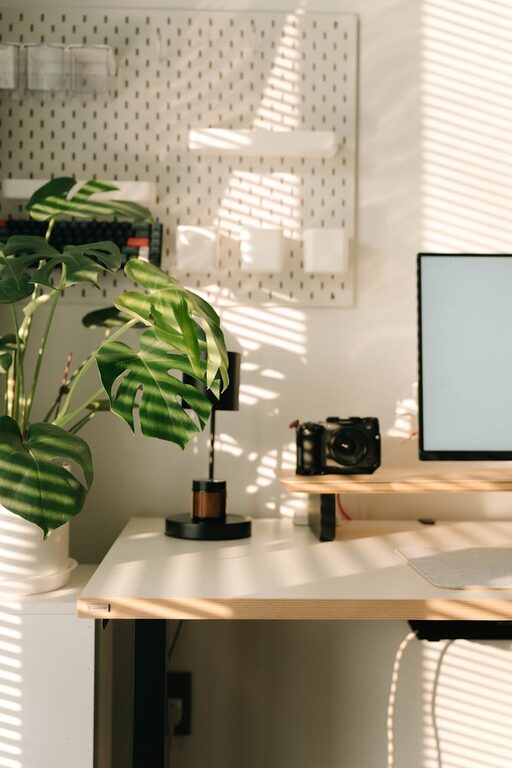
How to Create a Relaxing Home Workspace for Better Focus
Creating a relaxing home workspace is essential for maintaining focus, productivity, and overall well-being, especially as many people continue to work remotely or spend more time at home. A cluttered or uncomfortable environment can increase stress and reduce your ability to concentrate. Luckily, crafting a peaceful and inspiring work area doesn’t have to be complicated or expensive. In this guide, we’ll walk you through easy steps and useful ideas to design a home workspace that supports relaxation and productivity.
Why a Relaxing Workspace Matters
Your workspace environment directly affects your mood and work efficiency. When your surroundings are calm and inviting, it’s easier to focus, be creative, and enjoy your work. On the other hand, a disorganized or harsh setting can distract you and make you feel overwhelmed.
Creating a relaxing workspace helps:
– Reduce stress and anxiety
– Improve concentration and creativity
– Encourage healthy work habits
– Create a clear boundary between work and personal life
Step 1: Choose the Right Location
Start by selecting a spot in your home that suits your work needs and offers some privacy.
Tips for Picking the Spot:
– Opt for a quiet area away from heavy foot traffic or loud appliances.
– If possible, choose a space with natural light to enhance mood.
– Make sure there is enough room for your desk and necessary equipment.
– Consider a nook, spare room, or a corner in a bedroom or living room.
Step 2: Focus on Comfort and Ergonomics
Comfort is key to staying productive without strain. Invest in ergonomic furniture that supports good posture and comfort.
Essentials for a Comfortable Workspace:
– Ergonomic chair: Look for adjustable chairs with lumbar support.
– Desk height: Desk or table height should allow your arms to rest comfortably.
– Monitor placement: Position your screen at eye level to reduce neck strain.
– Foot support: Use a footrest if your feet don’t rest flat on the floor.
Step 3: Keep It Organized and Clutter-Free
A tidy workspace helps your mind stay clear and focused. Organize your desk and supplies to minimize distractions.
Organization Ideas:
– Use drawer organizers or trays for small items.
– Keep only essential items on your desk.
– Use cable management tools to avoid tangled cords.
– Store paperwork in labeled folders or filing cabinets.
Step 4: Incorporate Soothing Colors and Decor
Colors and decor influence your mood. Choose a color palette that promotes calm and focus.
Decorating Tips:
– Soft blues, greens, or neutrals are known to have a calming effect.
– Add personal touches like framed photos or artwork that inspire you.
– Include plants to bring in greenery and fresh air.
– Avoid overly bright or distracting decorations.
Step 5: Optimize Lighting
Proper lighting reduces eye strain and creates a comfortable atmosphere.
Lighting Recommendations:
– Maximize natural light by positioning your desk near windows.
– Use adjustable desk lamps with warm white bulbs.
– Avoid harsh overhead lighting or glare on screens.
– Consider soft background lighting for evening work sessions.
Step 6: Control Noise and Create a Calm Sound Environment
Noise distractions can interrupt your workflow. Create a sound environment that supports concentration.
Ideas for Managing Noise:
– Use noise-canceling headphones or earbuds.
– Play ambient background music or nature sounds.
– Add soft furnishings like rugs or curtains to absorb sound.
– Place your workspace away from noisy appliances or busy rooms.
Step 7: Establish a Routine to Maintain Your Space
A relaxing workspace requires upkeep. Develop routines that help you keep your area tidy and welcoming.
Helpful Habits:
– Spend 5 minutes at the end of each day tidying your desk.
– Regularly declutter and reorganize supplies.
– Schedule breaks to stand, stretch, and refresh your space.
– Replace or update decor seasonally to keep your environment inspiring.
Bonus Tips: Small Additions to Boost Relaxation
– Use essential oil diffusers or scented candles with calming fragrances like lavender or eucalyptus.
– Keep a water bottle handy to stay hydrated.
– Incorporate items that encourage mindfulness, such as a small journal or stress-relief toys.
– Set boundaries with family or roommates to minimize interruptions.
Final Thoughts
Designing a relaxing home workspace doesn’t have to be overwhelming. With some thoughtful choices and simple steps, you can create an environment that supports both your well-being and your work goals. Remember, your space should reflect your needs and inspire a sense of calm. Start small, personalize your area, and enjoy the benefits of working in a peaceful, organized setting.
Creating a harmonious workspace can transform your workday and make working from home a more enjoyable experience. Give these ideas a try and find out what works best for you!
